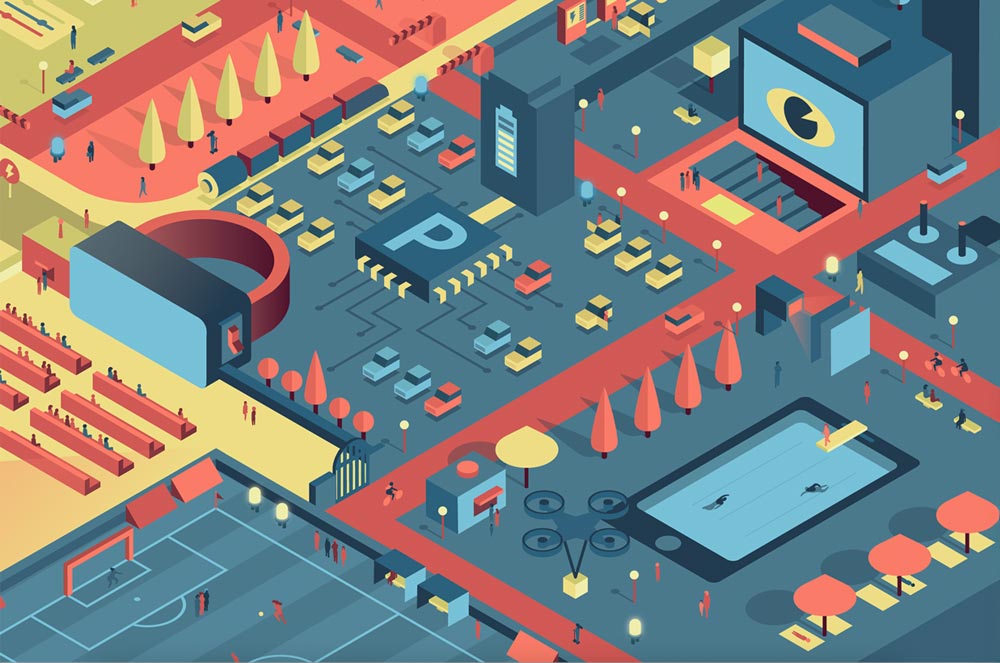Urban Sandbox of Valencia: the city as a real-world environment for innovation
Technological innovation is often associated with labs, simulated environments, or closed spaces. However, the real challenge begins when those solutions must be brought into the real world. To facilitate that transition, the Urban Sandbox of Valencia presents itself as a regulated and open environment where advanced technologies can be tested directly in the city.
Where can you safely and legally test an autonomous street-cleaning robot, an urban prediction system, or a digital infrastructure, with technical support? Valencia was the first city in Spain to offer a structured answer to that question.
Since late 2024, this public initiative —driven by the València City Council in collaboration with València Innovation Capital, the València 2030 Urban Strategy, and the local entrepreneurial ecosystem led by Startup València— has turned the urban space into a real-life innovation lab.


What is it?
The Urban Sandbox is much more than a call for pilot projects. It’s a stable public infrastructure for urban experimentation that allows:
-
Testing prototypes, technologies or services in municipal spaces such as streets, markets, beaches, buildings, events or green areas.
-
Doing so legally and efficiently, thanks to a specific municipal ordinance with a single-entry point, simplified processes, and fee waivers.
-
Accessing over 100 officially listed public resources, including physical infrastructure, urban data and citizen engagement channels.
-
Achieving measurable results in short timeframes (under three months), with technical support and structured evaluation.
All of this is framed within a public-private-citizen collaboration model —commonly known as the quadruple helix— where public institutions, companies, research centers and citizens actively participate in project selection, execution, and follow-up.
This approach aligns with a growing trend among cities that seek safer and more structured ways to test emerging technologies. The concept of “de-risking experimentation”, highlighted by Bloomberg Cities in a recent article, suggests that urban innovation shouldn’t come at the expense of public services or resources. In this context, the Urban Sandbox of Valencia provides a regulated and operational framework to test real solutions in real environments, with clear criteria and institutional oversight.
What sets it apart from other models?
The sandbox concept isn’t new. It’s already used in regulated sectors such as banking or energy, and some European cities have developed testing environments focused on mobility or sustainability. However, Valencia stands out in several key aspects:
-
Scope of application: while many initiatives are sector-specific (e.g., mobility or energy), Valencia’s approach is urban and cross-sectoral.
-
Legal framework: rather than relying on ad hoc or provisional frameworks, the city has a dedicated municipal ordinance.
-
Resources available: the sandbox provides access to more than 100 detailed public assets, from infrastructure to data streams —a rarity in other models.
-
Governance: Valencia adopts the quadruple helix approach, integrating government, business, academia and civil society.
-
Continuity: instead of issuing isolated calls, the sandbox operates as an open and ongoing program, with continuous project intake.
The key difference lies in its level of institutionalization: Valencia hasn’t launched a temporary program —it has built a permanent structure to enable real-world urban experimentation.
Who can take part?
The sandbox is open to a wide variety of stakeholders:
-
Startups and SMEs with ready-to-test products.
-
Established companies exploring new service or product lines.
-
Universities and tech centers with functional prototypes.
-
Citizen organizations with social innovation proposals.
-
Collaborative projects involving multiple entities.
There is no single target sector: from mobility to sustainability, robotics to predictive analytics, applied AI to public space management. The key is having a technology-based proposal, public value, and readiness to operate under real-world conditions.
Conclusion
The Urban Sandbox of Valencia marks a shift in approach: moving from lab-based proofs of concept to real-world validations. It’s about integrating technological innovation into everyday city life —in an open, controlled and collaborative way.
For those of us working on technology to solve real problems —in industry, logistics, sustainability or public services— this kind of initiative doesn’t just open new doors. It shows how useful innovation should be: data-driven, grounded in reality, and meaningfully connected to the people who use it.
If this model stays true to its principles —technological openness, public return, ethical data use and genuine civic participation— it could become a reference not just for Valencia, but for many other cities seeking to innovate without losing sight of the public interest.
Want to stay updated on innovation, AI and applied technology?
Follow nuestro blog, subscribe to WonderBits’ newsletter “AI in Industrial Focus”, or connect with us on LinkedIn to see how the world is being reshaped —one dataset at a time.